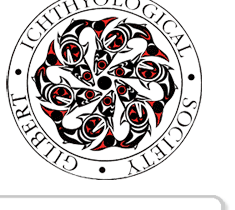
|
Charles Henry Gilbert
|
 Charles
Henry Gilbert was a pioneer ichthyologist
of particular significance to natural history of the western United States.
Born in Rockford, Illinois, on December 5, 1859, he spent his early years in
Indianapolis, Indiana, where he came under the influence of his high school
teacher, David Starr Jordan. When Jordan became a Professor of Natural History
at Butler University in Indianapolis, Gilbert followed, and received his B.A.
degree in 1879. Jordan moved to Indiana University, in Bloomington, in the
fall of 1879, and Gilbert again followed, receiving his M.S. degree in 1882
and his Ph.D. in 1883. His doctorate was the first ever awarded by Indiana
University. Charles
Henry Gilbert was a pioneer ichthyologist
of particular significance to natural history of the western United States.
Born in Rockford, Illinois, on December 5, 1859, he spent his early years in
Indianapolis, Indiana, where he came under the influence of his high school
teacher, David Starr Jordan. When Jordan became a Professor of Natural History
at Butler University in Indianapolis, Gilbert followed, and received his B.A.
degree in 1879. Jordan moved to Indiana University, in Bloomington, in the
fall of 1879, and Gilbert again followed, receiving his M.S. degree in 1882
and his Ph.D. in 1883. His doctorate was the first ever awarded by Indiana
University.
Jordan and Gilbert explored the streams and rivers of Indiana and the southeastern United States in the late 1870's, describing a number of new fishes. In 1879, Jordan was asked by Spencer Fullerton Baird of the U. S. Fish Commission to undertake a survey of the fisheries of the Pacific Coast of the United States. Jordan took a leave of absence from Indiana University, chose Gilbert as his assistant, and headed west to San Francisco, California in December, 1879. Their one year pioneering survey of fishes of the west laid the foundation for nearly 50 years of study of Pacific fishes and fisheries by the team of Jordan and Gilbert. By the time Gilbert received his Ph.D. degree at the age of 24, he was the author or co-author of over 80 scientific papers. Gilbert served at Indiana University from 1880-1884, first as instructor, then as Assistant Professor in Natural Sciences and Modern Languages. In 1884, he accepted the Professorship of Natural History at the University of Cincinnati, in Ohio, remaining there until December, 1888. In 1889, Gilbert returned to Indiana University as Professor of Natural History. Jordan became President of Indiana University in 1885. However, in 1890, Senator and Mrs. Leland Stanford chose Jordan to be the founding president of a new university to be established in Palo Alto, California, in memory of their deceased son, Leland Stanford, Jr. Among Jordan's first appointments to the new faculty was the Chairman of the Zoology Department, Charles Henry Gilbert. Gilbert then began a career at Stanford University which spanned nearly 37 years. He concentrated on Pacific fishes, mostly marine, and participated in numerous expeditions aboard the U. S. Fish Commission Steamer Albatross. These cruises included three to Alaska, two off California, and one each to the Hawaiian Islands and the Japanese Archipelago. As a pioneer descriptive ichthyologist, Gilbert described either alone or with others about 117 new genera and 620 species of fishes. Around 1909, Gilbert turned his attention to the study of Pacific salmon (Oncorhynchus spp.) and soon became the foremost expert on these economically important fishes. He studied salmon from California to Alaska, but concentrated his efforts in British Columbia (from about 1912 to 1921) and in Alaska (from about 1918-1927). He was the first to apply the scale method to aging of Pacific salmon, he pioneered racial studies using scales, and he was instrumental in establishing tagging programs on salmon in Alaska. He was the first to confirm the "home stream" theory to spawning Pacific salmon. Additionally, he was also one of the very first scientists to consider the population dynamics of northwest stocks of salmon. In his later years, Gilbert became an outspoken champion of the need for conservation of Pacific salmon resources, warning all who would listen that this resource was in dire jeopardy unless over fishing was curtailed. His world view was far ahead of his time, and he urged the U.S. Bureau of Fisheries to instigate data collection programs for Alaska salmon. Always formal and proper, and a man of high moral standards, Gilbert nevertheless was a demanding person with a sharp eye and an even sharper temper. He supervised the graduate studies of several notable ichthyologists, among them William Francis Thompson and Carl Levitt Hubbs. Gilbert died in 1928 at the age of 68, but he has been remembered and honored by ichthyologists and fishery biologists for his many contributions. The Gilbert Fisheries Society was established in 1931 at the College of Fisheries, University of Washington. This organization was short lived, however, and the Society was reconstituted in 1989 as the Gilbert Ichthyological Society. A United States Bureau of Commercial Fisheries research vessel was commissioned in 1960 as the Charles H. Gilbert and, recently, a new building at Stanford University was named the "Charles H. Gilbert Biological Sciences Building".
|

email webmaster.

